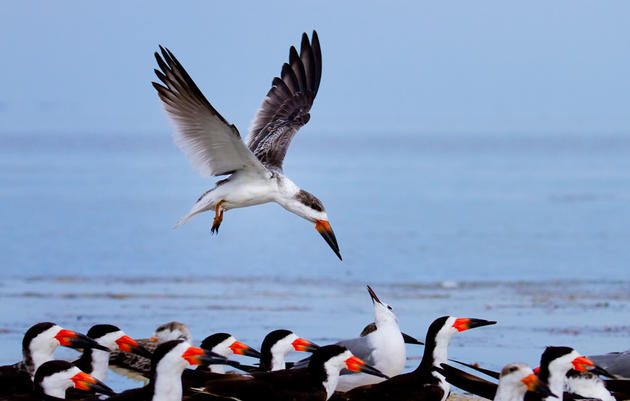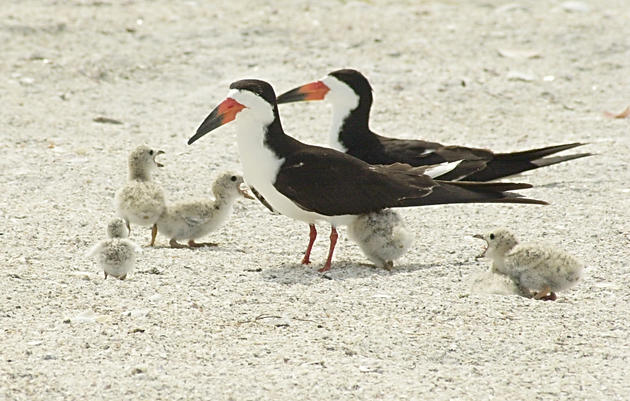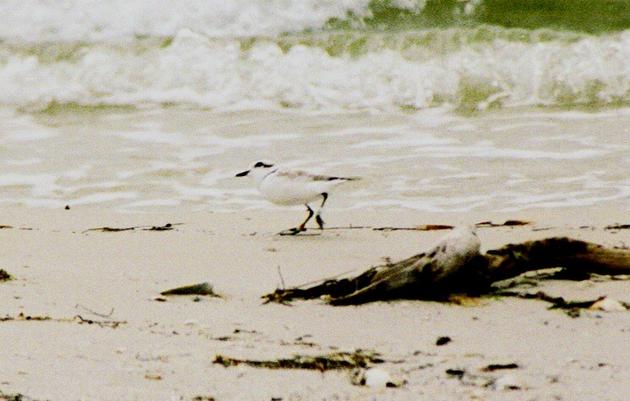Most avid birders come across a banded bird sooner or later, but might not know how important it is to report what they see. Banded bird sighting reports are vitally important to the conservation and long-term survival of many of our most imperiled bird species, and amateur bird watchers play a critical role!
Here are some examples:
- Reporting banded birds helps biologists to understand migratory patterns, territory size, range, habitat use, mortality, longevity, and a number of other factors critical to a specie’s survival.
- Reporting banded chicks, adults, and migratory shorebirds helps pinpoint beaches, causeways, and islands that are important feeding and resting areas for birds prior to or during migration so that we can ensure those special places are protected from disturbance.
- Reporting banded chicks and adults at beach-nesting and gravel rooftop-nesting sites helps assess "nest site fidelity" -the innate habit of returning to the same location year after year to nest. Site fidelity differs among shorebird and seabird species. For some species, a catastrophic disturbance one year can cause the birds to search for a new nesting location that may be safer than the previous site
- The period between hatching and a chick’s first flight, when they can fly to avoid danger, is critical to their survival. Observing banded chicks may help to pinpoint factors in preventing them from reaching this critical stage.
If you see a banded bird:
- Note the date, time, and location (with GPS if possible)
- Note the species
- Note which legs or legs have bands
- Note the color and order of bands –upper or lower and left or right leg. If the band or flag has an alphanumeric code, try to note the code
- Take a picture (ideal, although not mandatory). Digital cameras work great through scopes and sometimes even binoculars.
- Report your band to the North American Bird Banding Laboratory. They will tell you where and when the bird was banded, add the data to their database, and send the data to the bander.
- Feel free to share your sightings on the Florida Banded Birds Resightings Facebook page.
- Find more information about reporting banded birds in Florida here.
Related
Coastal Conservation
Audubon Florida recruits volunteers to assist with on-the-ground wildlife and habitat management.
Coastal Bird Stewardship
Florida's beaches and shores are vital to many different bird species throughout the year. And they need your help.
Banded Snowy Plovers Tell Story of Conservation in Florida
What we were looking for as the sun was quickly setting was a uniquely banded Snowy Plover - a Snowy Plover whose haunts and habitat are known only to Audubon's research team and a few locals.
How you can help, right now
Donate to Audubon
Help secure the future for birds at risk from climate change, habitat loss and other threats. Your support will power our science, education, advocacy and on-the-ground conservation efforts.
Become a Monthly Donor
Donating monthly is flexible, easy and convenient and makes you a champion birds can count on, no matter the season.
Volunteers Needed
Florida's birds and wildlife need your time and energy. Learn how you can become a citizen scientist or a volunteer at one of our nature centers today.






